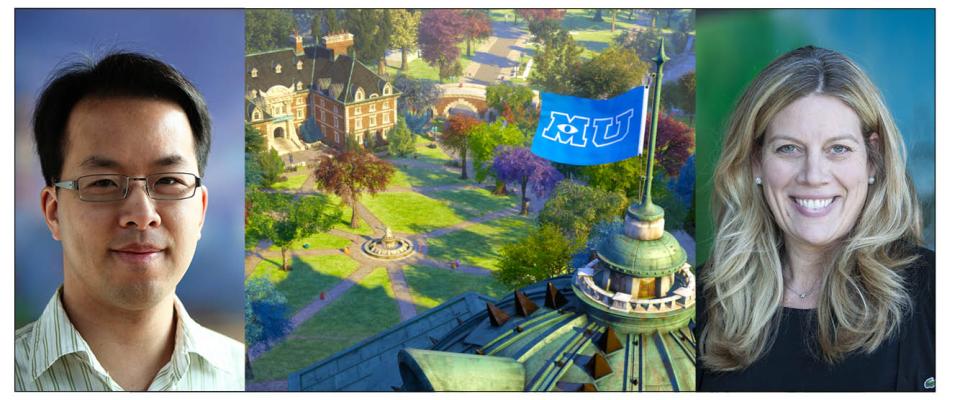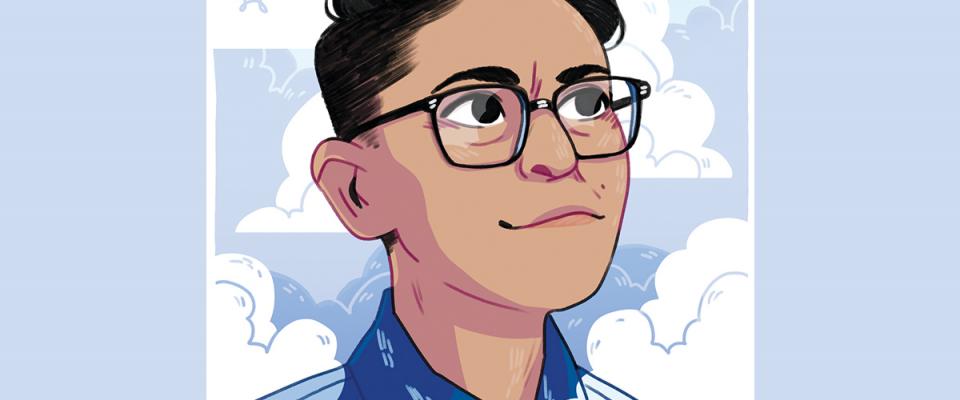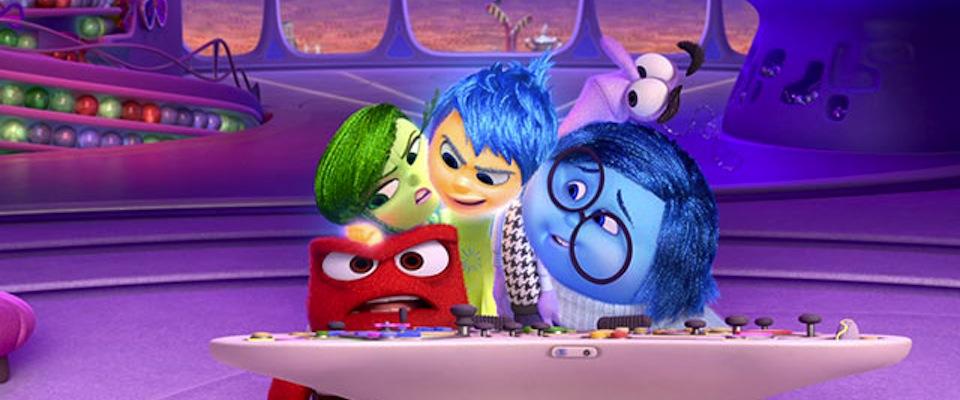Winter Break is coming, along with relatives who will almost certainly ask questions just like that. Well, we went nosing around Pixar Studios and talked to three Berkeley alums whose answers may surprise you.
Sociology isn’t the easiest major to explain to practical-minded grandparents, and Gillian Libbert says she picked it because, “It sounds corny, but I love people and I love what people can create!” By the time she graduated in 1991, she knew she wanted to make movies, so off to Los Angeles she went. Once there, her career path was fairly traditional: She knew someone who was able to get her a crummy entry-level job, and she stuck to it and worked her way up through props and costumes (including a stint as costume supervisor for the Star Wars series) and into production. Her last L.A. job was as field producer for the reality show The Amazing Race, after which she admits she returned to the Bay Area “following a guy.” With her skills and interests, Pixar was the obvious place to work.
She’s been there eight years now, wrangling digital people and props instead of physical ones. Her favorite Pixar movie is her most recent credit, Monsters University, although she’s now working on The Good Dinosaur. If she could have any job at the company, she would want “all of them!” Or rather, she clarified, a day or so in every job to satisfy her curiosity about them all.
George Nguyen majored in chemical engineering, which he says is a fascinating subject—for someone else. After graduation in 1999, he got a job as a web monkey at a startup, while he thought about what he wanted to do. When Pixar posted an opening for someone to work on the company’s internal website, he had the chops and was ready to jump. That was 12 years ago, and Nguyen has since transitioned into a more artistic role as a character shader: He helps give the skin, fur, feathers, and whatnot that realistic texture. He says that for most Pixarians, whatever movie you’re currently working on is your favorite because it’s so engrossing. And already Inside Out is replacing Monsters U in his affections. If he could have any other job in the company, he’d spend some time in the lighting department, learning how to illuminate scenes so the textures come to life—sort of the other side of what he’s doing now.
Laurie Kim always wanted to be an artist, but her practical side had her majoring in computer science at Berkeley. Then one fateful day, Pixar presenters came to Cal and she realized what would be her perfect job. It didn’t happen right away, though. She took a more technical job after graduation in 2004 and learned more about design (and got a graduate degree at Stanford) while keeping an eye out for openings at Pixar. Finally, she nabbed a post as a software engineer—because Pixar continues to expand the possibilities of digital animation, the company often needs to develop its own software to accomplish its visions. It also is highly collaborative, grouping team members from different departments together on a given project, and encourages internal applicants and cross-field exploration. That’s ideal for Kim, who still has her eye on the art department, and hopes someday to be one of the people who come up with the character designs.
Most people vaguely know that Pixar had something to do with inventing digital animation, and they perhaps could identify Woody or Buzz Lightyear from Toy Story. But the Emeryville-based company started out as a small division within LucasFilm, and its first task had nothing to do with inventing interesting characters—it was charged with inventing digital tools for film editing.
As computer graphics improved, the Lucas techs began experimenting with original, wholly computer-generated work culminating in 1984’s The Adventures of André and Wally B. Where old cartoons required each frame to be individually drawn and colored, now animators could design the environment and character and let the computer take it from there. Instead of drawing every pose of a character, they would draw a virtual skeleton to tell the computer how the character can and can’t move. Rather than making sure that a background tree moved correctly in each frame to indicate wind, they could draw a tree and let the computer worry about how each leaf should flutter.
Steve Jobs knew a good idea when he saw one and purchased the digital division from George Lucas in 1986. Pixar continued to come up with innovative ways to combine computing and animation, and 1988’s Tin Toy became the first digital animation to win an Oscar. In 1991, Pixar signed an agreement with Disney to develop a full-length digital animated movie. It took nearly five years, but in 1995 Toy Story was released.
The Pixar campus in Emeryville is landscaped, gated, and closed to the public. Peeking through the fence you might spy some familiar sights: a giant replica seagull from Finding Nemo perches on a corner of the roof, and a larger-than-life Luxo statue looms among the trees. Like a lot of tech-oriented outfits, Pixar has on-site meals and cafés as well as recreation spaces and a relaxed atmosphere.
Several of the Cal alums who work there say the camaraderie at Pixar is a lot like that of Berkeley. Sometimes literally: In the research for Monsters U, the company bussed the team out to look at some real college campuses to get location ideas. They went to Berkeley first, since it’s practically next door, but when the bus headed for the Peninsula in the afternoon, a lot of the Berkeley alumni suddenly lost their enthusiasm for the field trip.




















